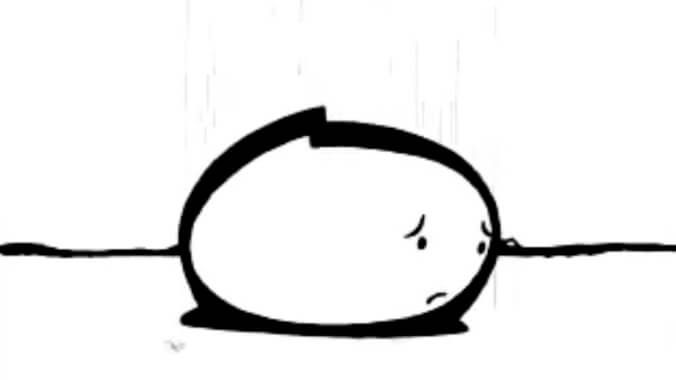Read this: The origins of the "sad blob" from those early '00s Zoloft commercials
Animator Patrick Smith created an ad whose cartoon character embodied the effects of depression

Though it has plenty of tough competition, the “sad blob” from those early 2000s Zoloft TV commercials stands (or slumps) strong among the surprisingly stiff competition that is the canon of horribly depressed cartoon characters. In order to figure out how this famously miserable egg-thing came to be—and the role it played in normalizing discussions of mental illness in popular culture— Mel Magazine looked into the advertisement’s history.
Sad Blob, it turns out, was created by animator and filmmaker Patrick Smith, who got his start in professional animation working on Beavis And Butthead before moving on to Daria and, eventually, an advertisement production company. When tasked with “turning a circular character into ‘a personification of emotion …’” Smith came up with a design that he thought “was the simplest and most effective way to express the emotion of sadness and depression, as well as the transition, or recovery, to happiness and interacting with the world.”
The article also interviews medical doctors, psychologists, and psychiatrists who point out how well Sad Blob explained depression’s scientific basis while encouraging viewers to feel empathy for those suffering from it. The piece also, crucially, touches on the fact that the efficacy of the blob was double-edged since it was ultimately just an ad for a company that wanted to sell the benefits of a specific drug. While it may have been really great at describing and depicting depression for a wide audience, the commercial also fulfilled its purpose of depicting Zoloft (and not a combination of therapy and other medications) as a “cure” for the condition, much to the frustration of doctors.
For more on Sad Blob’s origins and legacy, read the rest of the story over at Mel Magazine.
Send Great Job, Internet tips to [email protected]